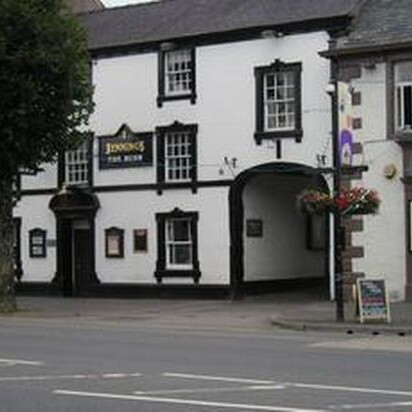
Living in Cockermouth
Thinking about moving to Cockermouth? Discover why it's a great place to live, fun things to do here, what the local schools and transport connections are like - and of course the most important thing of all: how much houses cost to buy.
Your guide to moving to Cockermouth
Why Cockermouth is a good place to live
Cockermouth is a charming town that is full of character. Residing in Cockermouth means living in a place that boasts a perfect balance of history and modernity. Located on the edge of the Lake District National Park, Cockermouth offers the convenience of town amenities with the tranquil beauty of the lakes and mountains just a stone's throw away. The town has been restored and revitalized after recovering from past floods, showcasing the resilience of this wonderful community. The town's schools, such as All Saints' CE, enjoy excellent ratings, making moving to Cockermouth an appealing option for families. For the foodies, Cockermouth is a thriving food destination, offering many unique eateries like the Quince & Medlar and The Bitter End pub.
What's Cockermouth famous for?
Cockermouth is famous for being the birthplace of renowned poet William Wordsworth. Visitors can tour Wordsworth House and Garden, the poet's childhood home and now a National Trust attraction. Cockermouth is also known for its connection to Fletcher Christian, best known for leading the Mutiny on the Bounty. Additionally, Cockermouth is renowned for Jennings Brewery, a prestigious local business serving high-quality ales since the 19th century. The town's architecture, which presents a blend of medieval, Georgian, and Victorian elements, makes it culturally significant and adds to its charm.
Things to do in Cockermouth
There is an array of activities to do while living in Cockermouth. The town is blessed with an abundance of independent shops that offer a unique shopping experience. The Kirkgate Centre is an excellent arts venue that hosts various cultural events, theatre, and cinema, adding a dash of culture to the town's ambience. Cockermouth also offers an excellent range of eateries, pubs, and quality dining experiences. Sports enthusiasts can enjoy walks and cycling, with trails running through scenic views, adding a touch of adventure to everyday living. A visit to the Wordsworth House and Gardens for an insight into the poet's 18th-century life is a must-do and a visit to Cockermouth Golf Club offers a day of enjoyment.
We have used a bespoke generative AI model to help us research and create our area guides. All of our content is reviewed, and edited where needed, by our trusted team of Zoopla content editors.
Average asking prices in Cockermouth today
We update our average asking prices every day using data from millions of properties for sale.
Properties currently for sale in Cockermouth
Whether you're looking to buy a family home or a beautiful apartment, we've got you covered.
Offers over
£220,000
- Bedrooms3
- Bathrooms1
- Living rooms1
3 bed terraced house for sale
Pinfold Close, Cockermouth CA13Offers over
£250,000
- Bedrooms3
- Bathrooms2
- Living rooms1
3 bed terraced house for sale
Challoner Street, Cockermouth, Cumbria CA13Offers over
£150,000
- Bedrooms3
- Bathrooms1
- Living rooms2
3 bed end terrace house for sale
Rubby Banks Road, Cockermouth CA13Offers in region of
£230,000
- Bedrooms2
- Bathrooms1
- Living rooms1
2 bed end terrace house for sale
Market Street, Cockermouth CA13
Transport in Cockermouth
Find the nearest train stations and other transport links in Cockermouth.
Local connections
- Maryport
- National Rail
- 6.4 miles / 10.3 km
- Flimby
- National Rail
- 6.8 miles / 10.9 km
- Aspatria
- National Rail
- 6.9 miles / 11.1 km
- Workington
- National Rail
- 8.1 miles / 13.0 km
- Harrington
- National Rail
- 8.9 miles / 14.3 km
- Nichol End (Derwentwater) Ferry Landing
- Ferry Port
- 9.3 miles / 15.0 km
Schools in Cockermouth
Discover local primary schools, secondary schools and sixth form colleges in Cockermouth.
Education in Cockermouth
- Fairfield Primary School
- Ages: 3 - 11 years old
- Ofsted Rating: Good (2023)
- All Saints' CofE School
- Ages: 3 - 11 years old
- Ofsted Rating: Good (2018)
- Cockermouth School
- Ages: 11 - 18 years old
- Ofsted Rating: Good (2024)
- Eaglesfield Paddle CofE Primary Academy
- Ages: 3 - 11 years old
- Ofsted Rating: Good (2023)
- Bridekirk Dovenby CofE Primary School
- Ages: 4 - 11 years old
- Ofsted Rating: Outstanding (2011)
- St Bridget's CofE School
- Ages: 3 - 11 years old
- Ofsted Rating: Good (2023)
Local pubs in Cockermouth


Fredericks
Cockermouth, Cumbria, CA13
Brown Cow
Cockermouth, Cumbria, CA13Traditional Cumbrian Pub in the heart of Cockermouth

Bush Inn
Cockermouth, Cumbria, CA13
Trout Hotel
Cockermouth, Cumbria, CA13
Koppers Café Bar
Cockermouth, Cumbria, CA13Kopper's is a modern twist on the tradition. We boast the highest quality on all aspects, from coffee to our evening meals.




